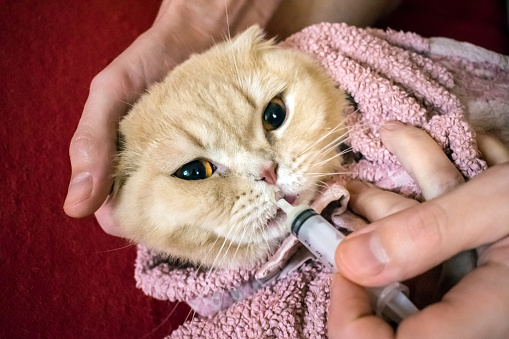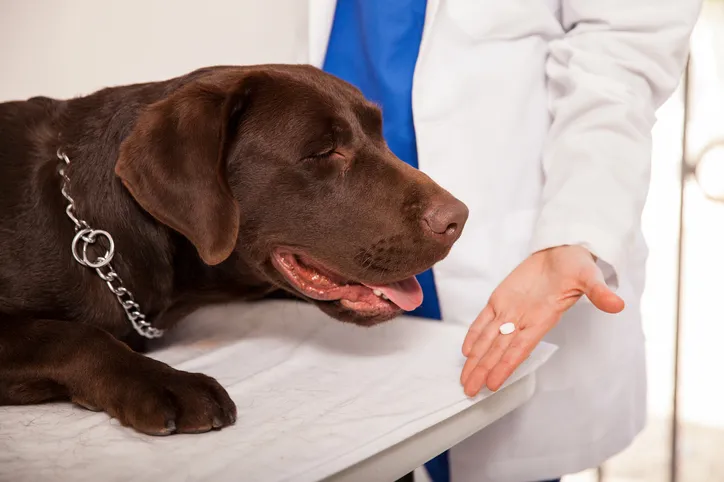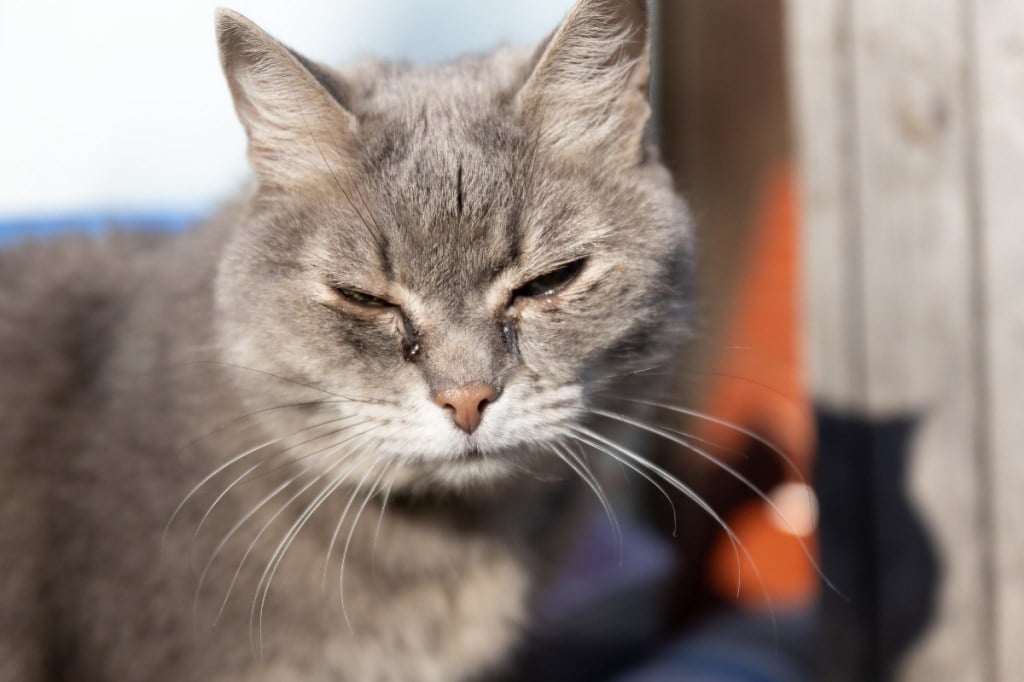Table of Contents
“Ugh, I hate taking pills.” Can’t you imagine our pets saying this when it’s time for them to take their medications? Administering those pills is not necessarily a walk in the park for pet parents, either. Most pet parents probably want to give their pets their pills as quickly and painlessly as possible. This article will show you how.
Medications with Food
Hiding pills in food is a popular way to give pills to pets. However, not all medications can be taken with food. Check with your veterinarian first to see if you can mix your pet’s pills in food.
Select a tasty food that your pet likes and doesn’t require much chewing. Peanut butter is an excellent choice for dogs, while tuna and salmon are great choices for cats. Cream cheese, yogurt, and ice cream are other good choices for dogs and cats. Pill pockets are another option but are not ideal for pets with food allergies or sensitivities.
Hide the pill in only a small amount of food to prevent the food morsel from being bulky. Use one hand to insert the pill in the food and the other hand to “seal in” the treat; this will prevent the taste of the pill from getting on the outside of the morsel.
To give the pill, try the “3-treat” technique. First, give your pet a pill-free treat, then give the pill-containing treat. Finally, reward your pet with another pill-free treat. Use the same type of food each time and feed each treat in the same way so your pet can’t guess which one contains the pill.
After giving the pill, observe your pet to see if they spit it out. Cats are more likely than dogs to chew the food morsel, increasing their likelihood of discovering the hidden pill and spitting it out. If your pet spits out the pill, wait about 30 minutes before trying again with another tasty food.
Even if your pet doesn’t spit out the pill, switch up the food in which you hide the pill to prevent your pet from figuring out when it’s ‘pill time.’
Medications without Food
Although popping a pill directly into your pet’s mouth can be a tricky and unnerving experience, you can do so safely by following these instructions.
- Choose an enclosed area to reduce the chances of your pet’s escape.
- Set the pill out for easy access and cover it with a small amount of butter to make it easier to swallow.
- If you have a cat, place a towel or blanket nearby so you can snugly restrain your cat.
- Position your pet comfortably. For cats and small dogs, set them in your lap. Larger dogs can be gently backed into a corner.
- Hold the pill between your thumb and index finger of your dominant hand. Use your non-dominant hand to grasp your pet’s muzzle from the top, placing your thumb near the canine teeth and your fingers on the other side.
- Tilt your pet’s head back toward the ceiling. If the lower jaw does not automatically drop, use the ring and pinky finger of your pill-holding hand to put gentle and steady pressure on the lower front teeth and lips.
- Quickly place the pill behind the ‘hump’ of your pet’s tongue.
- Close your pet’s mouth, return their head to the normal position, and stroke their throat to encourage swallowing. If you have a cat, consider using a needless syringe to squirt a little water or flavored broth into their mouth to help the pill go down.
- A cat will lick its lips or nose to indicate that they’ve swallowed. Observe your pet to make sure they don’t spit out the pill.
- Reward your pet immediately (e.g., positive talk, petting) after you give the pill.
Pilling Alternatives
For some pets, taking pills can be an extremely frustrating or even dangerous experience. One alternative is compounding pills into a flavored medication; this is performed at a compounding pharmacy. Another option is reformulating pills into chewable tablets. These alternatives can be expensive and may affect a drug’s effectiveness, so check with your veterinarian to see if these options are available for your pet’s medications.
Pilling guns are also available. These devices protect your fingers by placing the pill far enough back on the tongue to trigger a swallow. If you are wary of putting your fingers in your pet’s mouth to give a pill, ask your veterinarian to demonstrate how to use a pilling gun.
Whichever method you choose to give pills to your pet, always watch your pet’s demeanor. If they are growling or become fearful, stop trying to administer the pill. If you ever feel unsure about giving the pills, your veterinarian or veterinary technician can demonstrate how to do so safely and quickly. Last but certainly not least, praise your pet when they swallow their pill. Positive reinforcement will make the experience better for both of you!
The content is not intended to be a substitute for professional veterinarian advice, diagnosis, or treatment. Always seek the advice of your veterinarian or other qualified health provider with any questions you may have regarding a medical diagnosis, condition, or treatment options.
If you love your pets like family, you want to protect them like family. By enrolling in pet insurance, you can save up to 90% on vet bills which means saying “yes” to life-saving treatments, no matter the cost. If you’re not a part of our pack, start by getting a free quote.







